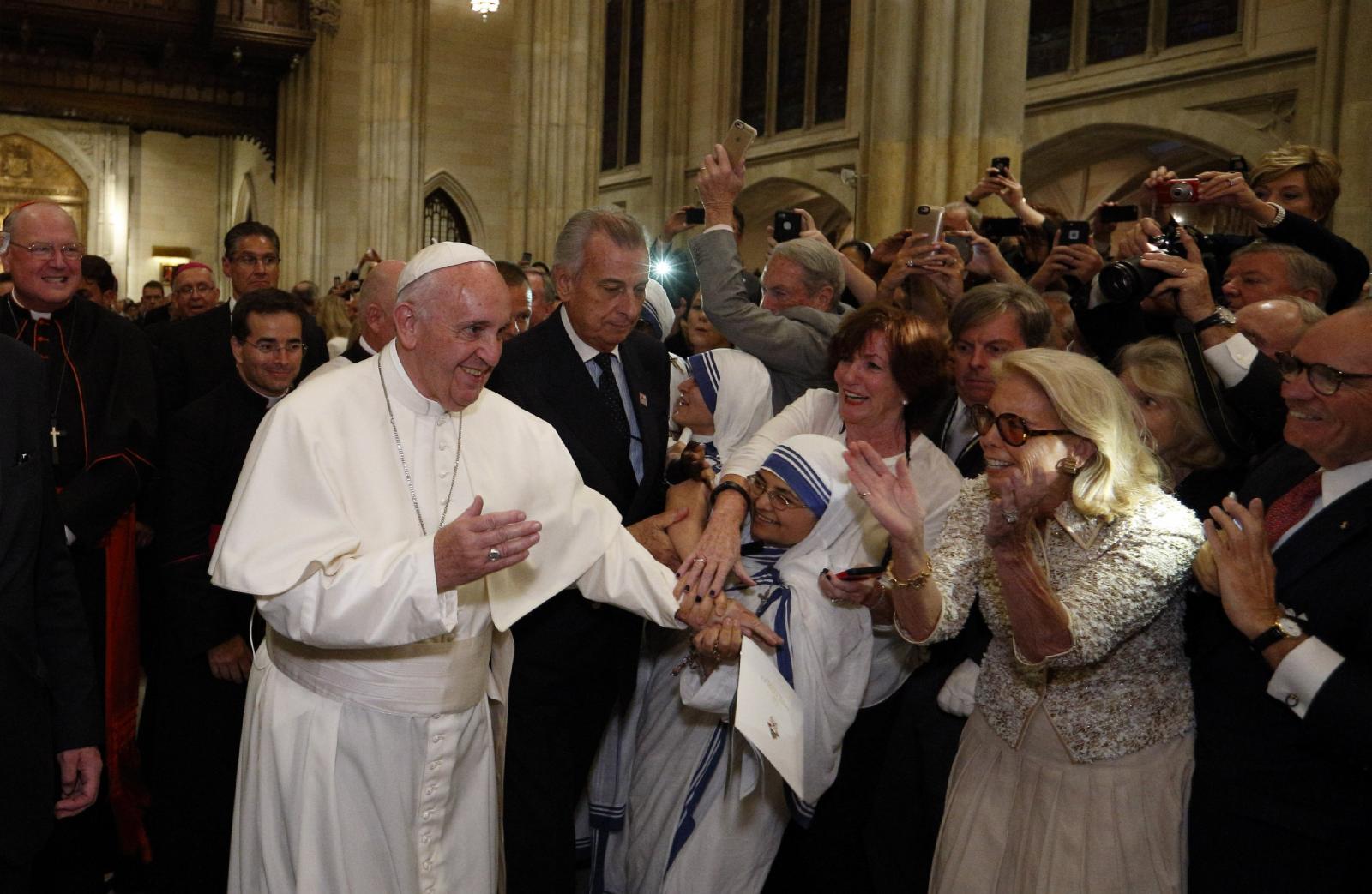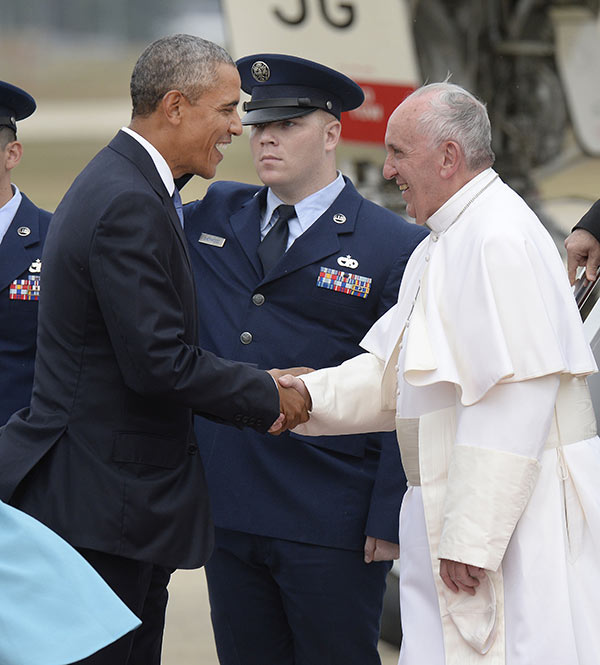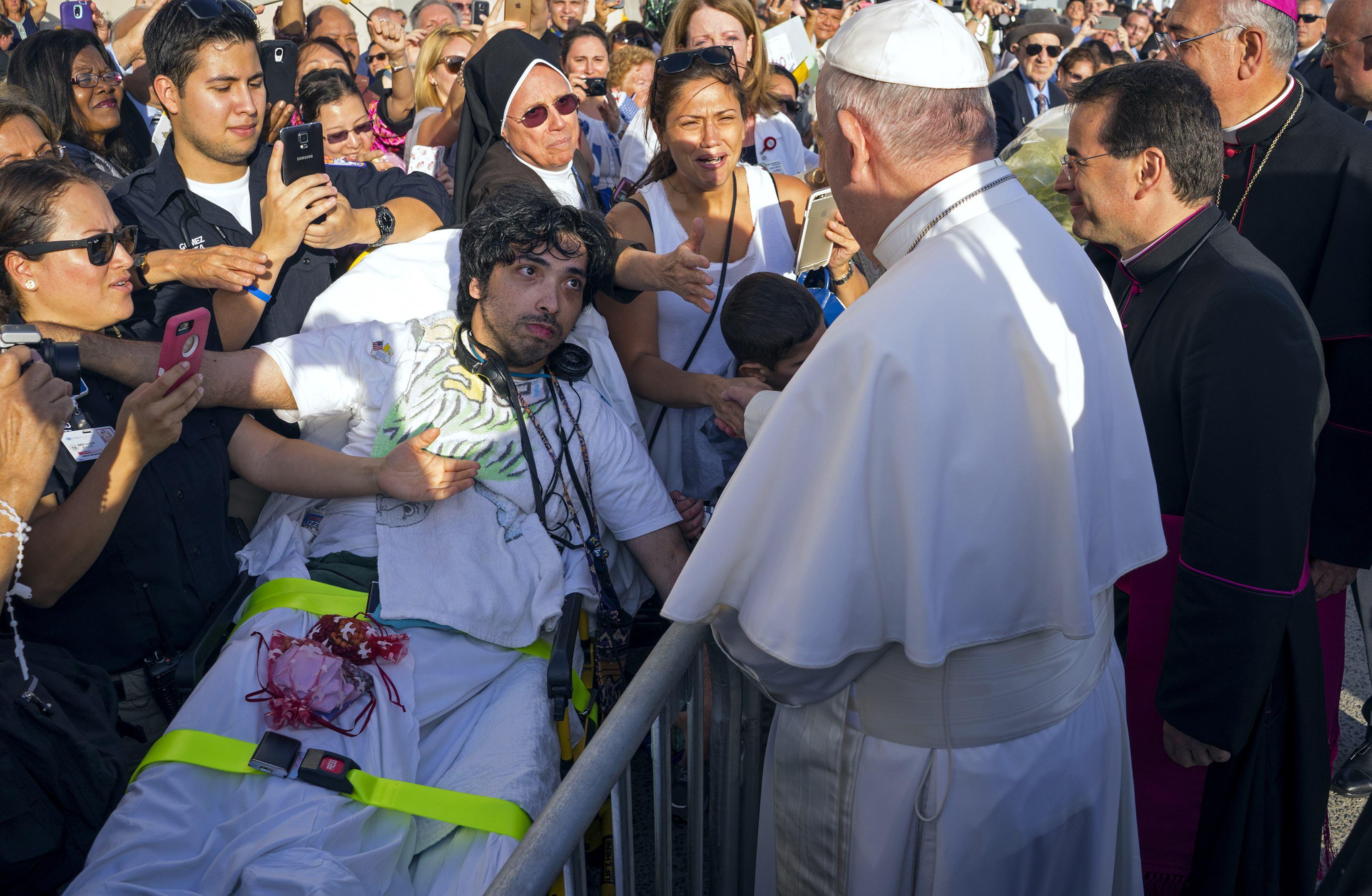Could a single week reshape a nation's perspective, touching hearts and sparking conversations across diverse communities? The September 2015 visit of Pope Francis to the United States wasn't merely a tour; it was a cultural and spiritual phenomenon, leaving an indelible mark on American society and the global stage.
The pontiff's journey, spanning six days, from Washington, D.C., to New York City, and culminating in Philadelphia, was a meticulously crafted itinerary of symbolic gestures and profound pronouncements. Pope Francis, the first pontiff to address a joint session of the United States Congress, captivated audiences with his message of humility, compassion, and inclusivity. His visit, a tapestry woven with public appearances, private meetings, and carefully chosen locations, reflected a deliberate effort to engage with the American people in all their complexity.
| Category | Details |
|---|---|
| Full Name | Jorge Mario Bergoglio |
| Born | December 17, 1936, in Buenos Aires, Argentina |
| Died | April 21, 2025 (Hypothetical based on the provided text. Pope Francis is still alive) |
| Reign as Pope | March 13, 2013 Present |
| Previous Positions | Archbishop of Buenos Aires (1998-2013); Cardinal (2001); Provincial Superior of the Society of Jesus in Argentina (1980-1986) |
| Notable Writings | Evangelii Gaudium (The Joy of the Gospel), Laudato si' (On Care for Our Common Home), Fratelli Tutti (On Fraternity and Social Friendship) |
| Key Themes | Social justice, environmental protection, interfaith dialogue, compassion for the poor and marginalized, reform of the Church |
| Significant Actions | Simplified Vatican finances, established a commission to protect minors, convened the Synod on the Family, emphasized the Church's role in addressing climate change |
| Reference Website | Vatican Website - Official Biography |
The echoes of this momentous occasion continue to resonate, offering a glimpse into the evolving dynamics between faith, politics, and public opinion. The United States, a nation built on principles of religious freedom and separation of church and state, witnessed a papal visit that managed to transcend the usual protocols, forging deeper connections with a diverse citizenry.
The journey commenced in Washington, D.C., where Pope Francis was greeted by a presidential welcome at the White House. President Obama's remarks, delivered during the welcoming ceremony, underscored the significance of the occasion, highlighting the shared values and areas of collaboration between the two leaders. The Pope's schedule included a historic address before a joint session of Congress, a platform that allowed him to directly address the nation's lawmakers and, by extension, the American people. The visit wasn't limited to formal events; it extended to the streets, with massive crowds gathering to catch a glimpse of the pontiff, seeking blessings and inspiration.
The Popes itinerary was thoughtfully designed to encompass a wide spectrum of American life, acknowledging the nations complexities. His presence in New York City allowed for interactions with the United Nations, reflecting his dedication to global diplomacy and promoting peace. The final stop in Philadelphia served as the culmination of the World Meeting of Families, emphasizing his commitment to family values and global solidarity. These carefully chosen locations and events underscore the intentionality of the Pope's message and his willingness to engage with a diverse population.
The National Archives, custodians of federal government records, holds documentation relating to the papal visit. The federal government plays a significant role in coordinating and facilitating such high-profile visits, and these records offer invaluable insights into the planning, logistics, and security measures surrounding the event.
Pope Francis's visit also demonstrated a commitment to reaching out to those on the margins of society. The choice to visit the city's largest jail exemplified his focus on compassion, offering a message of hope and redemption to those incarcerated. This symbolic gesture further underscored his dedication to social justice, emphasizing his belief in the inherent dignity of every individual, irrespective of their circumstances. The visit to the prison, where the majority of inmates were serving sentences or awaiting trial, gave inmates a chance to hear the pope's message in person.
The impact of the 2015 visit transcended mere ceremonial events. It was a catalyst for conversations, inspiring introspection and prompting discussions on crucial social issues. The Pope's words, often delivered with eloquence and simplicity, resonated with people from various walks of life. From the halls of Congress to the streets of Philadelphia, the Pope's message of hope, unity, and reconciliation provided a much-needed balm during a time of increasing division.
One memorable encounter during the visit highlighted the personal impact of the Popes ministry. Gianna Masciantonio, a young girl battling a brain tumor, met with the Pope in Philadelphia, a moment captured in photos and widely shared. This encounter, like many others during the visit, showcased the Pope's ability to connect with individuals on a personal level, bringing solace and encouragement to those facing adversity. It illustrated the Pope's commitment to human suffering.
In his address to the United Nations, the Pope addressed the importance of environmental protection and the urgent need to address climate change. This clear stance helped amplify the conversation in the US and around the world. His message about social justice and compassion for the marginalized also served as a challenge to many Americans to consider how they treat those around them. These are the things that are said to have left a lasting effect.
The visits conclusion in Philadelphia, which included a special mass, was attended by thousands, reaffirming the Pope's message of solidarity and the role of faith in addressing global challenges. In his homily, the Pope often spoke about the importance of families in building a better world.
The significance of the 2015 visit is also underscored by the fact that it was only the 10th time a Pope had ever visited the United States. It provided a unique opportunity to experience firsthand the leadership of a global religious figure. The careful planning and the selection of locations reflected an understanding of the American landscape and its diverse population. It demonstrated the relevance of religious leadership to a modern, evolving society.
Beyond the borders of the United States, Pope Francis continues to travel the world, addressing global issues. His forthcoming visits to Indonesia, Papua New Guinea, Timor Leste, and Singapore, as announced by the Holy See Press Office, highlight his unwavering commitment to fostering dialogue and building bridges across cultures and religions. His willingness to accept invitations to visit countries like Vietnam demonstrates his commitment to spreading his message of peace, justice, and reconciliation across the globe.
Though the visit was brief, its impact extended far beyond the six days of the tour. It was a moment of reflection, a chance for Americans to re-evaluate their values and priorities. His visit, therefore, should be considered a significant event in American history.


